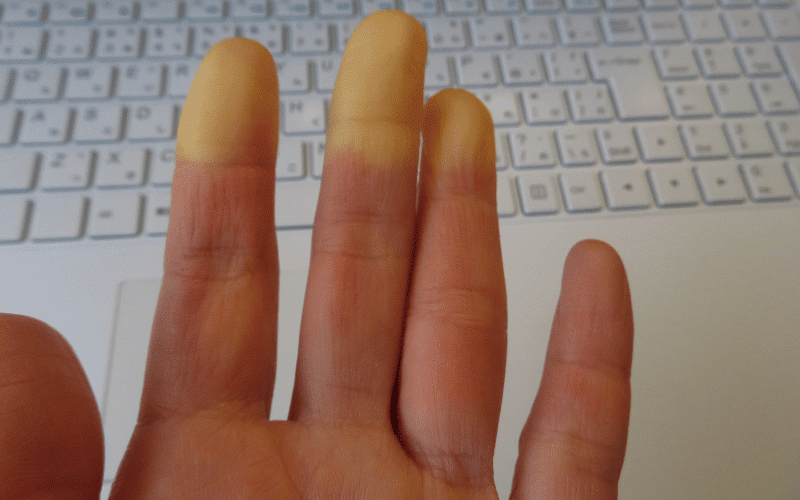Symptom 9: Raynaud’s Phenomenon – A Tale of Cold Fingers and Toes

Raynaud’s phenomenon, a condition characterized by an exaggerated response to cold temperatures or stress, is a common symptom in lupus. It affects the blood vessels in the skin, causing them to narrow excessively in response to cold, leading to reduced blood flow to the affected areas, often the fingers and toes.
During a Raynaud’s attack, the fingers or toes may turn white, then blue, and finally red as the blood flow returns. These episodes can be accompanied by numbness, tingling, and discomfort. This triphasic color change is a hallmark of Raynaud’s phenomenon, serving as a distinctive sign of this condition.
For people living with lupus, managing Raynaud’s phenomenon often involves lifestyle modifications aimed at minimizing exposure to cold. Wearing warm gloves and socks, avoiding cold environments, and managing stress can help reduce the frequency and severity of attacks. In severe cases, medication may be prescribed to help relax and widen the blood vessels.
Raynaud’s phenomenon highlights the systemic impact of lupus, affecting not just the joints and skin, but also the blood vessels. It serves as a reminder of the intricate and wide-ranging effects of this autoimmune disease. (9)